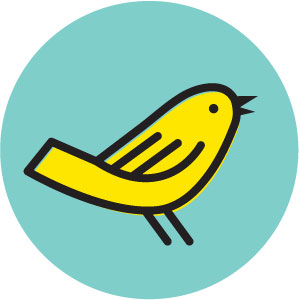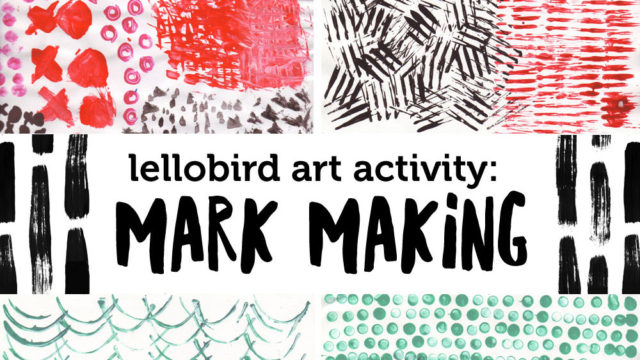Choosing a 100 Day Project
The 100 Day Project launches next week, April 7, 2020. And, of course because I’m a pantser, to borrow a term from NaNoWriMo, I didn’t officially decide until yesterday what my project this year is going to be.
Thinking ahead 100 days seems extra poignant this year – personally, I feel a little anxiety but also a strong sense of hope in looking ahead that far, and realizing that there will be an end to all this craziness, whenever that may be.
“The great surrender is the process; showing up day after day is the goal. For the 100-Day Project, it’s not about fetishizing finished products—it’s about the process.” – founder Elle Luna
This year more than ever I feel like really getting into the process of making is beneficial for me – losing myself in art for a little while helps keep me sane.
This might be a good year to do a collaborative project – like drawing the same thing as a friend every day, or emailing a friend a drawing for them to finish, or making up prompts for each other, or illustrating your friend’s song or poem – as a way to keep in touch with someone you can’t see in person.
For anyone else still on the fence about what to do, I thought it might be helpful to take you through my process selecting a project, and a few of the things I learned doing the 100 Day Project for the first time last year.
I spent some time reading other people’s assessments of their own projects and pondering my experiences. I think this line from Annabel Tempest sums it up nicely: “although [it] didn’t make masses of perfect work it did make masses of perfect moments.” If you think of it not as turning out 100 professional-quality projects but as a journey, it takes some of the pressure off. Last year I learned a lot not just about weeds and about drawing plants and using gouache and hand-lettering, but also about the places around me, and my work ethic and style.
The great thing about this project is that there are no rules – it’s all about personal growth, so if you miss a day or change your mind halfway through or whatever, it’s okay.
Here’s my process:
Brainstorm.
Look at your hobbies (existing ones or ones you’d like to develop), cruise through other people’s past projects online, start a Pinterest board of images that inspire you.
Ask yourself:
- What am I curious about?
- Is there a skill I’ve been wanting to learn or develop, like hand-lettering or knitting?
- What do I have on hand? What do I want to use up?
- Is there something I’m aspiring to, like children’s book illustration, that I’d like to add to my portfolio? (I heard someone – I wish I could remember who – say the other day, “Make the kind of art you want to sell.” I can’t decide if that’s brilliant advice or incredibly jaded – probably a bit of both.)
- What’s interesting in my house or neighborhood?
- What wouldn’t I mind drawing or exploring 100 times??
Some ways to brainstorm:
Take a look around.
Last year, I looked at all the weeds in my yard and at the baseball and soccer fields where I spent every weekend minute watching my kids’ games, and realized I wanted to know more about them.
This year, stuck at home, my top three ideas all came from looking around my studio and thinking about what I had on hand. I love ephemera, and have a big collection of outdated library circulation cards (you’ve probably seen my fabrics and prints), as well as pretty but dilapidated old books (too many of them, according to my husband), a bunch of old stamps and a jar containing pretty much every fortune cookie fortune I’ve ever gotten, as well as those I’ve begged off friends and family.
Doodle.
Because I’m a visual person (duh), I like to brainstorm with thumbnails – I’ll take a blank sheet of paper and draw a million little doodles and ideas, with one thing leading to another.
Map it.
When my kids were in preschool, their teachers used to help them figure out what the class should explore next using mind maps. They’d ask the kids to come up with a topic, and then the class would brainstorm related ideas that they’d write down on clouds shooting off the main idea, until they had a whole web of ideas and angles to explore. I’ve used this same method while leading a meeting with a multi-national company to help them figure out what info needed to go on their website, so it’s pretty flexible. This technique is actually a good analog for how my brain works, so it works well for me and helps me corral ideas a bit around a theme. (example above)
Make a list.
If you’re more of a linear thinker, a list can be a great way to brain-dump all your ideas before you try to narrow it down. I keep a running list of ideas for projects in the back of my sketchbook as they occur to me throughout the year, since there’s no way I’d be able to remember them all in April otherwise.
Whatever method I’m using, I like to brainstorm on paper with a pen or pencil – I feel more creative that way. But if you’re a tech person, feel free to do this step with online notes or diagrams.
And keep track of those ideas you didn’t use – you may use them in a future year, or just for other projects. I’m a big believer that no creative effort is ever wasted, even if you don’t turn it into something tangible right away.
Narrow it down.
My problem isn’t usually coming up with ideas, but narrowing it down to the one I want to focus on next!
Ask yourself:
- What sparks my interest? What am I passionate about?
- What do I have time for? To really stick with something for 100 days, it can’t take up too much of your time. Aim for 30 minutes a day, tops, unless you have way more free time than I do. Fifteen minutes would be even better. The official guide recommends 5-10 minutes a day, but that didn’t seem realistic for me.
- What do I have materials for? You don’t want to spend a lot of money buying new stuff for this project. And this year we have the special consideration that many of us aren’t able to be out and about much (or at all), so the project has to be something you can do from home with what you have on hand.
- What do I have space for? For example, if you travel a lot, pick something small you can bring along with you wherever you go.
- Am I the kind of person who needs specific rules and structure, or do I like to keep things loose? Some people get really specific – 100 embroideries of endangered animals or 100 days of illustrations inspired by song lyrics about nature – and some people keep it more general, like just sharing their sketchbook spread daily. My advice is to be pretty specific, so you have clear direction and focus to inspire ideas, but not so specific that you’ll run out of ideas.
If you really can’t decide, ask others to vote on your top choices – after narrowing it down to three choices I took a family poll this year and one was a clear winner. You could also ask your Instagram followers, your writing group, your mom group or any other group of people whose opinions you value.
Keys to success.
Keep it simple.
You’ll be more likely to stick to it if you pick something you can do in half an hour or less every day. There are going to be days when you have deadlines or have to get dinner on the table or are dealing with life and just don’t have a ton of time to devote to the project, but if it’s something relatively quick, you can still knock out that day’s installment and get on with things.
Pick something you won’t be bored with.
Most importantly, pick something you want to do every day for the next 100 days. Pause a moment here to do the math and realize that 100 days from April 7 is July 15. That’s a lot of days!
Use the Reflection Guide worksheet.
This sheet from The 100 Day Project encourages you to think of things like three ways I can simplify my project, what materials I’ll need, how I’ll make time for the project, what I’ll do to get back on track if I miss a day and how I’ll celebrate the 100th Day.
Let go of perfection.
This project is all about the process and the showing up every day. To tell you the truth, there were some drawings last year I didn’t love, that just didn’t turn out the way I was hoping, and it was hard to post those on Instagram and show the world something imperfect. But the fact that I did one every day meant a lot to me.
Share.
Announce what you’re doing to the world – put it on Instagram, tweet it, tell your friends – seriously, once I started telling people in my daily life what I was doing (which was somehow harder than telling the entire internet, go figure), I became accountable to a lot of people IRL, in addition to Instagram followers, who wanted to know what the next weed was going to be!
Still need ideas?
Some of other people’s past projects to inspire you:
- 100 Days of Animal Collages Based on Rhymes & Poems by Clare Youngs (@clareyoungs)
- 100 Days of Blackout Poetry
- 100 Days of It’s Okay
- 100 Days of Vintage Office Supplies by Jacqueline Storm (@jaqstorm)
- Violeta Nedkova has collected even more projects here.
- And here are some more ideas in an article from Michael Bierut, whose 100-day graphic design workshop at the Yale School of Art inspired Elle Luna to start the 100 Day Project.
I can’t wait to see what you come up with!



